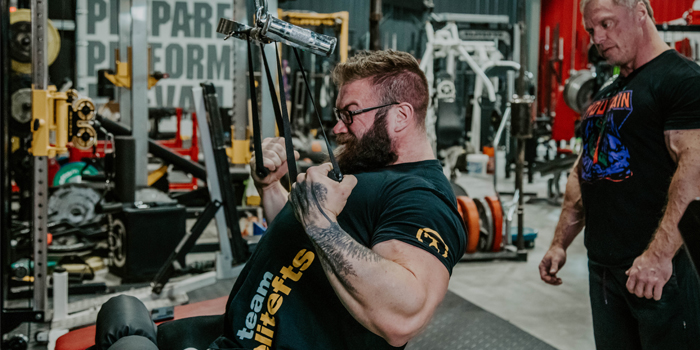
We spent the better part of my last few coaching logs trying to differentiate muscle functions for muscle actions. Here, we’re defining function as how a muscle works when we’re walking and breathing, which are two core tenants of human function.
This becomes a fundamental difference between training for strength and training for stability. Isolated muscle action, which is adding resistance as we move it from origin to insertion (strength), versus integrating muscle function, which is how we utilize that muscle to stabilize in system (stability).
- Strength: Ability to exert force
- Stability: Ability to resist force
There are muscles in the body that have a more clear distinction as to which one of these adaptations they prefer. The rotator cuff, transverse abdominis, and piriformis, for example, would all be muscles that are clearly earmarked as muscles of stability.
RECENT: Are Bands a Bad Idea for Rotator Cuff Strengthening?
Then there are some muscles that seemed to be our horsepower muscles: lats, hamstrings, and triceps, which are muscles that have a tremendous ability to exert great amounts of force.
To Train in Dao
There seems to be somewhat of a yin and yang relationship when it comes to applying a stimulus to the above-listed muscles. The rotator cuff, a stability muscle, seems to have some capacity to respond to strength training. As we’ll discuss moving forward, the latissimus dorsi, which is a major mover in our body, has an ability and a need to train with stability.
If you were to look up latissimus dorsi in an anatomy textbook, you would get the same ol’ rundown. Origin, insertion, innervation, action... This is how most people learn anatomy. And for the lats, it would look like this:
- Origin: Spinous processes of vertebra T6-T12, L1-L5, the base of the sacrum, iliac crest, lower three ribs, inferior angle of the scapula
- Insertion: Floor of the intertubercular groove
- Innervation: Thoracodorsal nerve C6, 7, 8
- Action: Adducts and internally rotates the arm; extends the arm when it’s externally rotated
All of the above is all well and good, except it gives us no real-world applicable context to how this muscle actually functions.
The lats, with their unique fan shape and broad origin off a piece of tissue called the thoracolumbar fascia, play a massive roll in the stabilization of the trunk through rotation. The lats give functional stability to the sacroiliac joint and oftentimes help decelerate rapid arm movements on the trunk (any overhead sport will be an example of this).
With such a great potential for global stability, the function of the lats is rarely realized, utilized, and therefore, subsequently trained. More lifters concern themselves with training muscle actions, putting tension across the fibers of the lats with the hopes that they'll grow to monumental proportions, without ever dosing them in even the most minute moment of function to help better stabilize their trunk and core, minimize the risk of low back pain, and ultimately, promote longevity in lifting.
There are plenty of ways that this can be achieved. Below is a video that will better help explain how the function of walking can help better dictate the intent of a staple exercise in most lifters’ programs — the single-arm dumbbell row.
Conclusion
In order to ensure longevity, we need to understand how joints and muscles function, how these systems integrate with each other in the most basic of human activities — walking and breathing. When we learn this, we can then effectively begin to add doses in exercises accordingly to make sure we maintain optimum function and therefore keep ourselves in the gym and under the bar.










